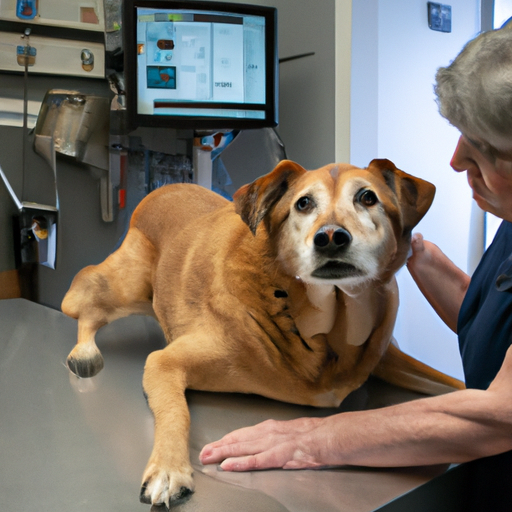Understanding Canine Arthritis
Canine arthritis, a condition that’s more common than you might think, often goes unnoticed by many pet owners. This is, in part, due to the stoic nature of our furry companions, who often don’t show signs of pain until the condition has become quite advanced. Symptoms like a subtle change in gait, decreased activity, or reluctance to jump or climb stairs could all be indications that your dog is suffering from arthritis.
Treatment Options
There are several ways to manage arthritis in dogs. Here are a few:
- Medication: Your vet might prescribe nonsteroidal anti-inflammatory drugs (NSAIDs), pain relievers, or corticosteroids. Always follow your vet’s dosing instructions.
- Nutrition and Weight Management: Maintaining a healthy weight can help reduce the strain on joints. Ask your vet about special diets or supplements for joint health.
- Physical Therapy: Activities such as hydrotherapy or range-of-motion exercises can help keep your dog mobile.
Creating a Comfortable Environment
You can make adjustments at home to ease your dog’s discomfort:
- Flooring: Installing non-slip mats can provide better traction for your dog and prevent falls.
- Bedding: Orthopedic beds offer more support and can ease pressure on aching joints.
The Role of Regular Exercise
Regular, gentle exercise can help keep your dog’s joints flexible and maintain muscle mass. Remember, the goal is not to wear your dog out but to keep them moving.
| Type of Exercise | Benefit |
|---|---|
| Walking | Improves overall fitness |
| Swimming | Non-weight bearing exercise that reduces joint strain |
Coping and Support
Seeing your dog in pain can be difficult. Remember, you’re not alone. Reach out to support groups, either online or in your community. You can share experiences, advice, and emotional support.
FAQ
Q: Can arthritis be cured in dogs?
A: Unfortunately, arthritis is a degenerative disease and cannot be cured. However, its progression can often be slowed and discomfort managed.
Q: Are certain breeds more prone to arthritis?
A: Yes, larger breeds such as Labradors, German Shepherds, and Golden Retrievers are more prone to developing arthritis.
Q: How can I tell if my dog is in pain?
A: Signs may include limping, difficulty moving, yelping when touched, changes in behavior, and reduced activity.
Remember, your dog’s comfort and quality of life are paramount. With your loving care and the right management strategies, your arthritic dog can still enjoy their golden years.



